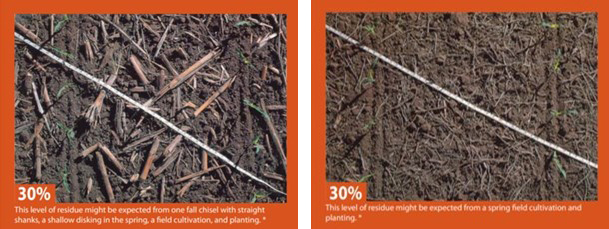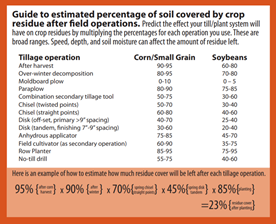Main Content
Kate Brown, Program Associate in Commercial Agriculture, Burlington County
Conservation tillage practices allow crop residue to persist on the soil surface, minimizing winter erosion. The goal is to retain 30% or more soil coverage at planting (Figure 1) which, in turn, keeps nutrients on the farm, protects water quality, and preserves soil health.


The amount of surface residue retained at planting is directly influenced by fall management practices. The Natural Resources Conservation Service (NRCS) has developed a handy guide to help you estimate soil coverage after field operations (Figure 2). How much soil coverage do you anticipate?
As you revisit your fields this spring, estimate the amount of crop residue you have retained and take note of any obvious signs of erosion. Try implementing one of these small changes in 2021 and observe the impact on residue retention in 2022:
- Grow high residue producing crops
- Plant fall-seeded cover crops where crop residue is insufficient
- Experiment with cover crops by seeding them on field edges or in highly erodible areas
- Modify tillage practices to:
- Delay tillage until spring
- Reduce the number of tillage passes
- Work tillage implements at shallower depths
- Drive slower on tillage operations
- Use straight shanks and sweeps on chisel plows instead of twists
Source
Farming with Crop Residues. USDA-NRCS, Feb. 1992, https://www.nrcs.usda.gov/Internet/FSE_DOCUMENTS/nrcs141p2_029000.pdf. Accessed 11 March 2021.